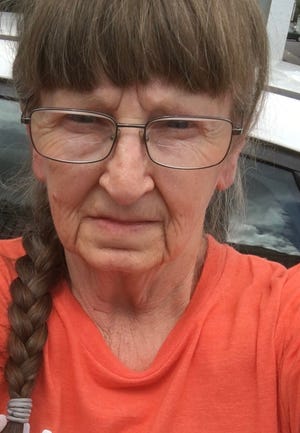Eitan Charnoff, national director of iVote Israel in 2016, denies it had ties to intel firm Psy-Group, where he worked at same time on Senate-cited bid to help Trump win presidency
By SIMONA WEINGLASS 31 August 2020

Eitan Charnoff. (courtesy)
A former employee of the Israeli private intel company Psy-Group, who was cited by the US Senate Intelligence Committee in a report this month as a planner of a covert influence pitch by the firm to help Donald Trump win the 2016 elections, simultaneously headed iVote Israel, a purportedly nonpartisan group that aims to boost absentee voting in the US elections from Israel.
The former employee, Eitan Charnoff, insisted there was no connection between Psy-Group, whose pro-Trump covert plan he helped pitch to Trump officials, and the non-profit, ostensibly impartial iVote Israel, where he served at the same time as national director.
“They’re two completely separate organizations,” Eitan Charnoff said of Psy-Group and iVote Israel, when contacted by phone on August 26. He did not respond to further questions.
Get The Start-Up Israel's Daily Start-Up by email and never miss our top storiesFREE SIGN UP
Psy-Group went out of business in 2018. iVote Israel is still active. Its website urges Americans living in Israel “to make our voices heard. Register to vote, assert your voice and help safeguard the future of America and Israel.” It states: “We do not support any specific candidate or candidate’s committee.” According to media reports, 15,000 people used the organization’s services in 2016.
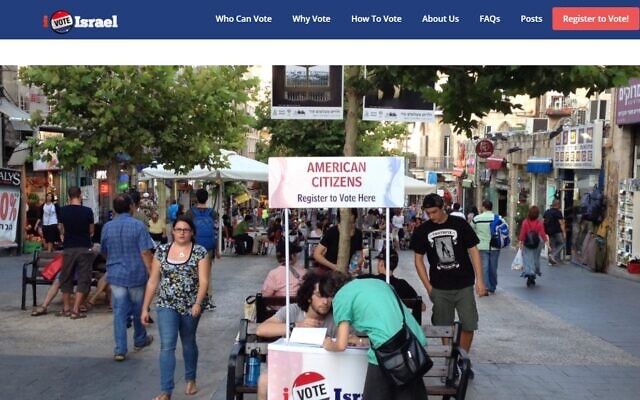
iVote Israel website. (Screenshot)
On August 18, the US Senate Select Committee on Intelligence released the fifth volume of its Russia investigation, which examines Russia’s attempts to meddle in US politics during the 2016 elections. An entire section of the report is devoted to the Israeli cyber-intelligence company, Psy-Group, which the report concludes pitched, but may not have carried out, covert influence services on behalf of the Trump presidential election campaign. “Psy Group representatives engaged with Trump Campaign senior officials in 2016 for a contract to perform work on behalf of the Campaign,” it states. “These engagements… purportedly never materialized into any Campaign work.”
Charnoff, an American-Israeli who immigrated to Israel from the Washington, DC area, is mentioned repeatedly in the report, as one of the Psy-Group employees actively involved in organizing the proposed covert influence campaign on behalf of then-candidate Donald Trump. “Charnoff then sent an email to Psy Group employees Amon Epstein, Royi Burstien, and others, outlining a business opportunity for Psy Group with the Trump Campaign,” the Senate report states, for example.
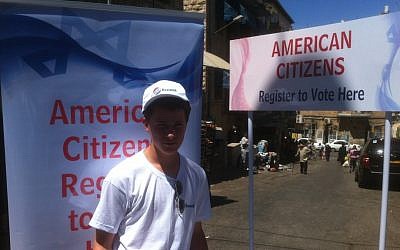
A volunteer signing up US citizens to vote on the streets of Jerusalem in 2012 (courtesy Elie Pieprz)
At the very same time that Charnoff was allegedly proposing the covert influence campaign to help Trump win, he served as the national director of iVote Israel, a self-declared nonpartisan group that encourages Americans in Israel to vote in US elections.
iVote Israel was accused by some voters at the time of flubbing their absentee ballot requests. “Potential voters supporting both political parties say that requests for absentee ballots filed through iVote were never received by their local elections officials,” JTA reported in 2016.
Charnoff’s simultaneous employment and prominence at the two organizations — the one alleged to have directly proposed a covert pro-Trump campaign to senior Trump officials, and the other ostensibly encouraging a nonpartisan absentee ballot drive in Israel — raises concerns over the impartiality of iVoteIsrael, especially when Charnoff was its national director in 2016.
Beyond stating that Psy-Group and iVote Israel were two entirely separate organizations even when he held senior responsibilities in both, Charnoff refused to elaborate and did not answer subsequent phone calls.
iVote Israel was founded in 2012 and is registered in the United States as a 501(c)(4), a so-called “dark money” non-profit that is not required to disclose its donors. Its stated purpose is to help as many Americans in Israel as possible to vote by helping them to obtain and mail-in absentee ballots. Its directors in 2012 and since have kept mum about the identity of the organization’s donors.
At the time of the organization’s founding, it was run by Elie Pieprz, a former activist with the Republican Jewish Coalition and, after immigrating to Israel, with Republicans Abroad Israel.
The group’s campaign strategist at the time of its founding was Aron Shaviv, a former campaign staffer for Yisrael Beytenu party leader MK Avigdor Liberman, as well as an international consultant to election campaigns in central and eastern Europe.
In 2016 Shaviv reportedly served as a campaign consultant to the pro-Russian Montenegrin political party known as the Democratic Front, which became involved in an attempted coup. According to the Senate intelligence committee report, the coup attempt in Montenegro was orchestrated by Oleg Deripaska, a Russian oligarch who also happened to employ the services of Psy-Group, according to the Senate report. “By 2016, Deripaska was involved in funding and executing an aggressive Russian-directed campaign to overthrow the Montenegrin government and assassinate the Prime Minister in a violent coup,” the report stated.
On page 696 of the Senate intelligence committee report, in an almost entirely redacted section entitled “____ and overseas voters,” there is a single footnote visible that reads “See Samir Kajosevic, Montenegro Prosecution Suspects Israeli Consultant of Coup Role.” Balkan Insight, July 31, 2019.” The cited article says Montenegrin prosecutors suspect Shaviv of helping the alleged coup and that Shaviv denies any involvement in criminal acts in Montenegro. On August 14, 2020, a Bosnian-language channel of Radio Free Europe reported that a day earlier Shaviv’s lawyer announced that Interpol had revoked an arrest warrant against Shaviv, because, the lawyer said, Interpol had concluded that the legal proceedings against Shaviv in Montenegro were “politically motivated.”
iVote Israel gets a new director
By 2016, Shaviv and Pieprz were no longer publicly associated with iVote Israel. Charnoff became the organization’s “campaign strategy advisor” in 2014, and by 2016, had become its “national director,” according to publicly available documents. Charnoff became an employee of Psy-Group in early 2015 and worked there till the company’s demise in 2018, according to documents seen by The Times of Israel.

Eitan Charnoff (Courtesy)
Nowhere on its website did IVote Israel list an Israeli address or corporate registration number. Every company or non-profit organization in Israel is required to have a company number, as a transparency measure that allows members of the public to look up basic ownership and financial information about it.
The Times of Israel sent text messages to both Pieprz and Charnoff asking whether the organization had such a number, but did not hear back.
The Times of Israel was able to ascertain that iVote Israel paid at least some of its bills in 2016 through a company called Knyon Group and Strategies Ltd, which was registered in February 2016 by Elie Pieprz at his home address in Karnei Shomron.
iVote Israel still has an active website and Facebook page but, at the time of this writing, had not posted on its Facebook page since May. An eligible American voter in Israel told The Times of Israel that he had received a targeted Facebook ad from the organization in August. The Times of Israel contacted iVote Israel’s new director, Yossi Raskas, to ask if about the organization’s latest activities, but did not hear back by the time of publication.
The pitch
According to the Senate committee report, Psy-Group initially got in touch with the Trump campaign in March 2016, when Kory Bardash, the head of Republicans in Israel, emailed George Birnbaum, an international campaign consultant, as well as Charnoff, a project manager at Psy-Group.
Bardash wrote: “I have spoken to both of you about the other. Hopefully, you can have a mutually beneficial chat.”
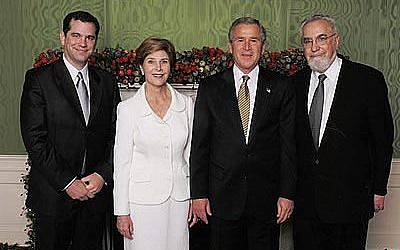
Kory (left) and Philip Bardash at the annual White House Chanukah Dinner with President Bush and the First Lady in 2012 (Facebook)
The Senate report suggests Charnoff was one of the key people at Psy-Group charged with planning the potential covert influence campaign on behalf of Trump.
“In a follow-on email, Charnoff indicated that following Birnbaum’s consultation with ‘the campaign,’ the prospective work for the Trump Campaign would be divided into two projects,” the report says.
“The first project consisted of opposition research on ‘the female opposing candidate,’ and comprised ‘dig[ing] up dirt as well as active [information] gathering on associates.’ The second project was focused on U.S. state delegates voting in the Republican primary and entailed using social media analysis to index delegates as ‘pro [T]rump, against and unknown.’ Charnoff further stated that the latter two categories of delegates would be targeted in an influence campaign ‘to support [T]rump and not change the convention rules.’”
Republicans in Israel
The Times of Israel contacted Republicans in Israel to ask what, if any, relationship it had with Psy-Group or iVote Israel, in light of the fact that its representative Kory Bardash communicated with Charnoff in the months leading up to the 2016 elections.
Mark Zell, the organization’s chairman, said it had nothing to do with Psy-Group.
“I may have read about them, but I don’t know who they are. We’ve had absolutely no connection with them.”
News accounts describe Republicans in Israel setting up Trump campaign headquarters in Karnei Shomron in 2016 and canvassing US citizens in Israel, urging them to vote, even if they had lived in Israel for many years and not voted in previous US elections. Republicans in Israel also reportedly set up telephone banks where volunteers phoned Israel-based supporters in swing states and encouraged them to vote for Trump because, they said, he would be good for Israel.
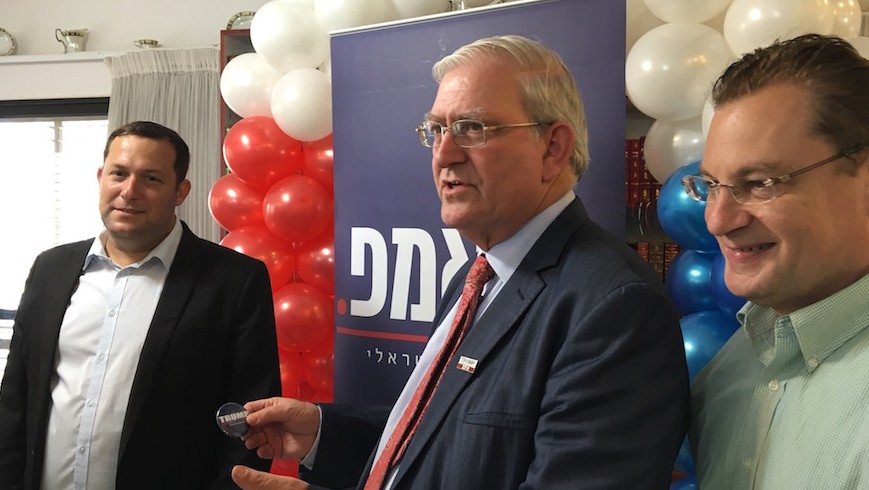
From left, Yossi Dagan, Mark Zell and Abe Katzman celebrating the opening of the Republicans Overseas Israel office in the West Bank town of Karnei Shomron, September 5, 2016. (Andrew Tobin)
Alexander Goldenshtein, a former adviser to Avigdor Liberman and former editor of the Russian-language Izrus news portal, reportedly helped set up Trump’s headquarters in Israel.
Republicans in Israel’s Zell said he remembered Goldenshtein. “He was a volunteer. We don’t have the budget to pay anyone. He helped set up balloons and organize the events physically, logistically.”
Goldenshtein told reporters that one of the headquarters’ purposes was to send a signal to Evangelical Christians in the United States.
“The opening of the headquarters in Israel was a signal for the evangelists. That is, the evangelicals realized that Trump is a real defender of the Jewish state, he will not give Israel offense. This is just the effect we wanted to achieve, and it seems to me that it turned out well!” Goldenshtein said in an interview with the Azerbaijani website, The Great Middle East.

